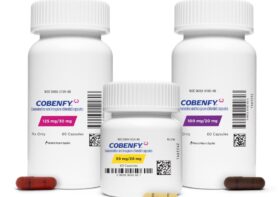We Tested 16 of the Newest Brooks Running Shoes. These Are the Best
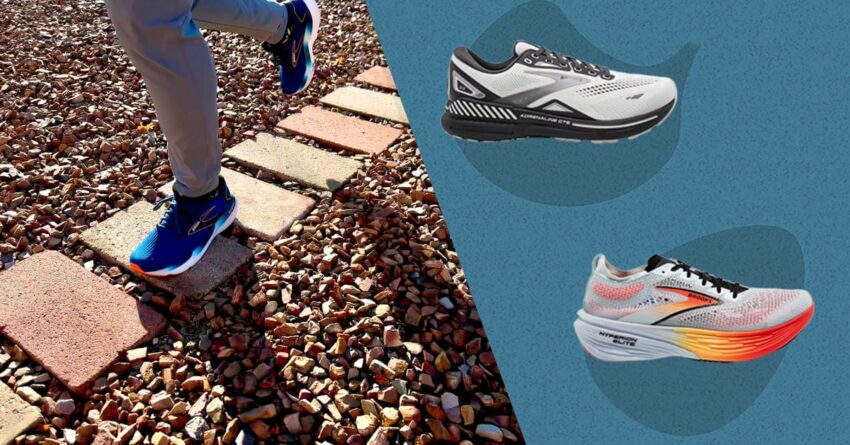
Men’s Journal aims to feature only the best products and services. If you buy something via one of our links, we may earn a commission.
Brooks is one of the most popular running shoe brands on the market—and for good reason. Top to bottom, the brand produces some of the best running shoes for most people. While critics worry Brooks has fallen behind in the “super-shoe” category, many runners, well, don’t really need a super-shoe.
Beyond Brooks’ popularity, the consistent quality of their shoes, from entry-level trainers to carbon-plated racers, is what makes this particular brand stand out. Our best overall pick, the Glycerin 21, isn’t just the best Brooks shoe—it might be the best running shoe released this year.
Related: The Best Running Shoes of 2023
Best Overall Brooks Running Shoe: Brooks Glycerin 21 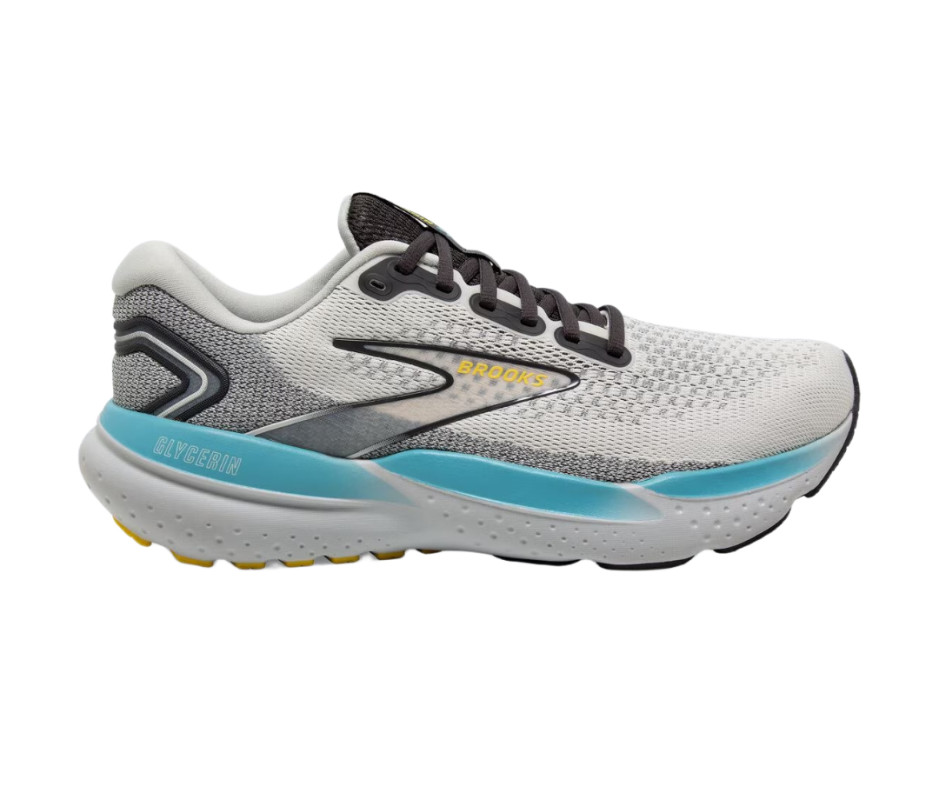 Brooks Glycerin 21
Brooks Glycerin 21
Courtesy Image
One of Brooks newest shoes is also this year’s best. I had absolutely loved the Glycerin 20 (as did multiple Men’s Journal testers) for recovery runs and easy efforts. The 21st iteration takes the extremely comfortable midsole, made of DNA Loft v3 foam, and adds pep to each step. Out of the box, it’s one of the plushest shoes money can buy, and unlike many well-cushioned or soft-feeling trainers, the Glycerin doesn’t feel clompy or plodding. Rather, the construction and silhouette makes for a stable, yet smooth, ride. While the knit upper can get hot in warmer temps, it provides a secure and unobtrusive fit for a variety of foot shapes.
My biggest qualm with the new Brooks Glycerin 21 is that they look, well, a bit homely compared to the previous version. I really admired the simple, sharp looks of the 20. But Brooks went with a louder, more retro style for the 21. If that doesn’t bother you, this shoe makes an excellent everyday trainer, as it provides a smooth and soft ride, including plenty of liveliness for those who run faster.
Pros:
- Extremely comfortable out of the box.
- Soft, stable cushioning without feeling clompy.
- Durable outsole and overall build.
- Many options to dial in fit and feel (GuideRail, Stealthfit, and width).
Cons:
- Doesn’t look as good as the previous model.
WEIGHT: 9.8 ounces
HEEL-TOE DROP: 10 mm
Best Brooks Running Shoe for Everyday Training: Brooks Ghost 15 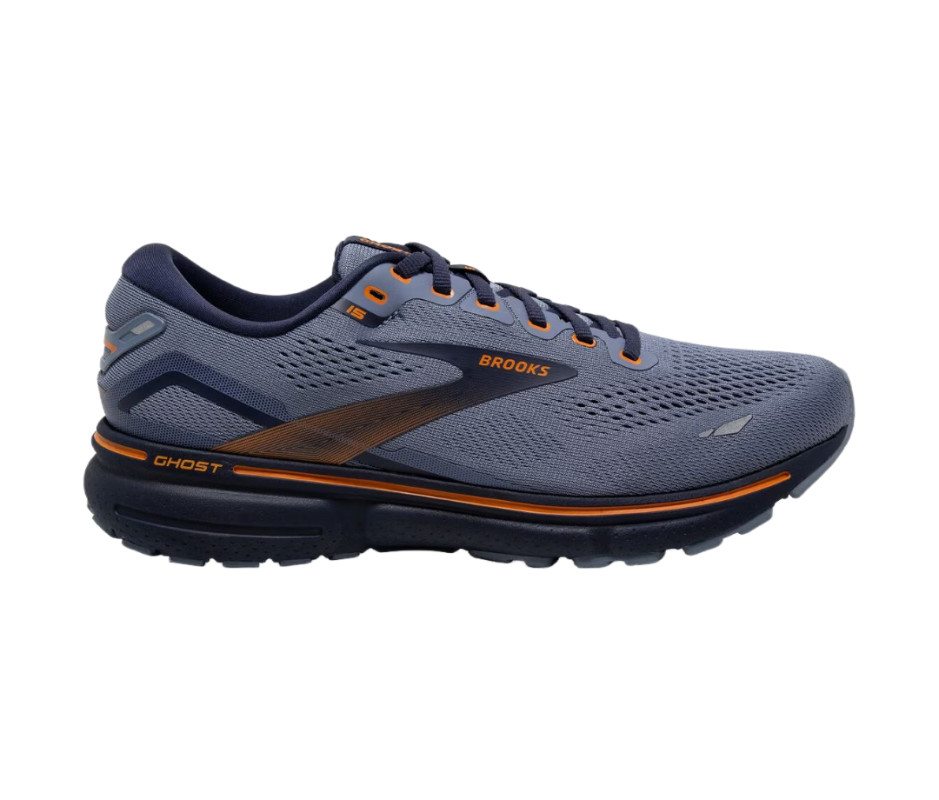 Brooks Ghost 15
Brooks Ghost 15
Courtesy Image
The Brooks Ghost remains extremely popular because each iteration consistently upholds its reputation. The Ghost 15 isn’t flashy, and Brooks doesn’t change it much year to year. It is, however, a solid everyday running shoe. As soon as you slip them on, you feel the appeal. Like the Glycerin, they have an accommodating, easy-to-dial-in fit. The midsole foam, DNA Loft v2, is plush and responsive. For most runners, the Ghost 15 is a neutral choice that suits their needs. It has a durable, smooth-rolling outsole and classic knit upper. And like the Glycerin, it comes in variety of widths, or even with Gore-Tex upper for wet days.
The Brooks website boasts 32 (32!) colorways for the Ghost 15, which means anyone can find a style that suits them. I even know a few runners who wear these as a casual sneaker. And at $140, this long-lasting shoe is a solid value.
Pros:
- Suits many different runners and abilities.
- Comfortable out of the box.
- Lots of colorways to choose from.
- Well-priced for a durable, everyday trainer.
Cons:
- Not versatile enough for more competitive runners.
- Heavier than the Glycerin or Ghost Max.
- Doesn’t feature the latest Brooks foam.
WEIGHT: 10.1 ounces
HEEL-TOE DROP: 12 mm
Related: The Best Running Shoes for Races
Best Value Brooks Running Shoe: Brooks Revel 6 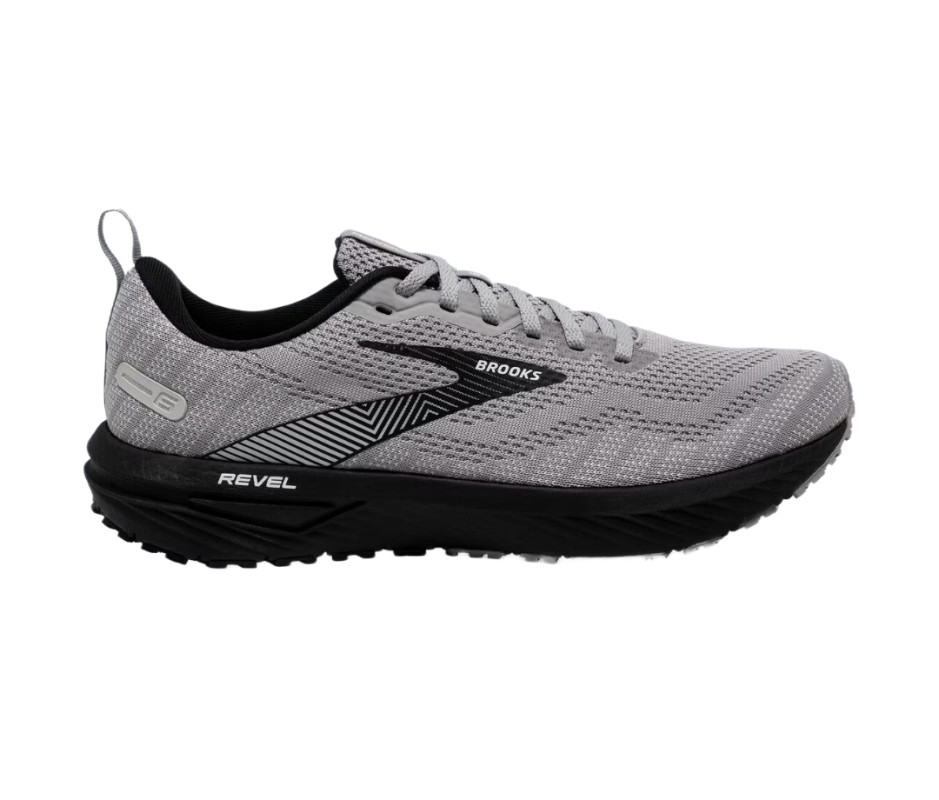 Brooks Revel 6
Brooks Revel 6
Courtesy Image
Brooks doesn’t make a “cheap” shoe—rather, they offer great value for your money. The Revel 6 is no exception. At just $100, it’s my favorite running shoes for the price. While the Revel 6 doesn’t feature Brooks’ latest, greatest foam, the classic DNA foam is still a quality, comfortable ride. The upper doesn’t feel significantly different than pricier shoes like the Glycerin or Ghost. And my favorite part of the Revel is its fantastic outsole. It’s super durable and provides a ton of grip on both pavement and light gravel. I actually wish more Brooks shoes had this outsole—it performs better during wet weather or uneven terrain than most other models. Additionally, if you like more ground-feel in your stride or a more minimal ride, the Revel has lower-profile cushioning and weighs less than most others on this list.
Pros:
- Superb outsole that performs well on variety of surfaces and in wet weather.
- Quality upper feels similar to more premium Brooks shoes.
- Inexpensive compared to other models.
- Lightweight.
Cons:
- Features older version of DNA foam.
- Less cushioning isn’t for everyone.
WEIGHT: 8.8 ounces
HEEL-TOE DROP: 10 mm
Best Brooks Running Shoe for Racing: Brooks Hyperion Elite 4 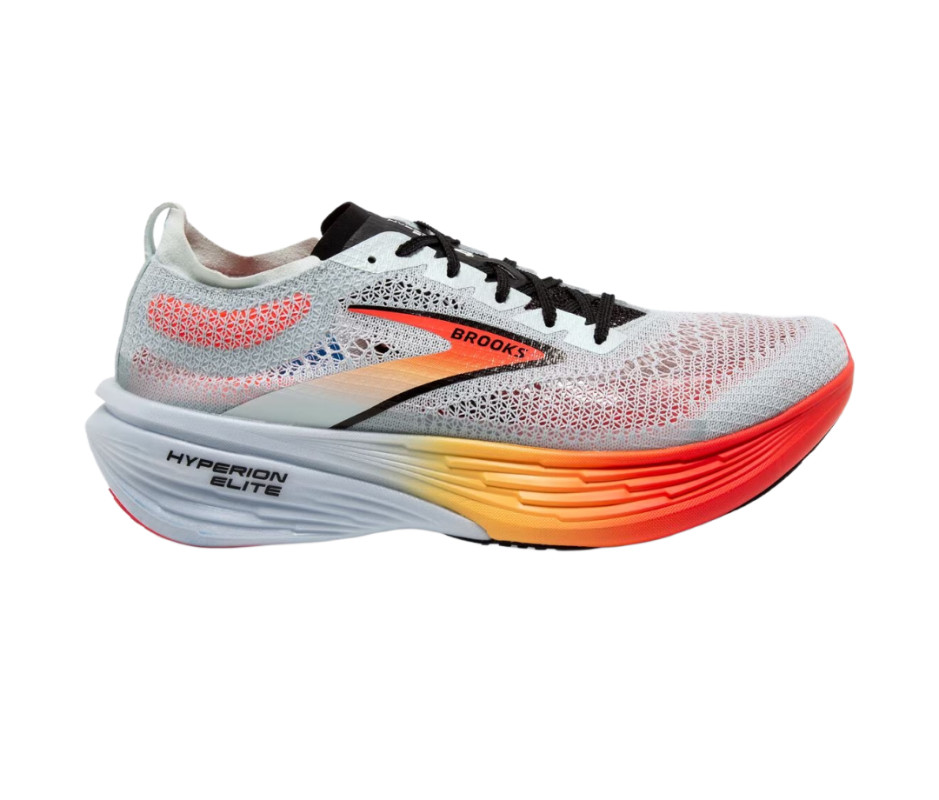 Brooks Hyperion Elite 4
Brooks Hyperion Elite 4
Courtesy Image
In the age of stiff, bouncy shoes that cover every foot at major marathons, some runners complain that the current Brooks Hyperion Elite features outdated tech. The upcoming Hyperion Elite 4 still uses an EVA foam (many high-end racers use the more-recently developed PEBA), albeit a much improved version of their DNA Flash v2. Brooks claims the new foam is lighter, and layered for more propulsion. When I asked Lee Sackett, product manager for Brooks’ racing and innovation footwear division, how the EVA foam matches up agains newer PEBA-based foams, he was unbothered. “Foam is nothing without a geometry that complements the plate geometry and the natural movement of the foot when running at speed,” he said.
At 7.8 ounces, the Elite 4 rivals the weights of other top racers. And you know what? For average runners as well as elites, these shoes are excellent. I’ve tried pretty much every top racing shoe out there, and as far as immediate comfort and fit goes, the newest Hyperion Elite is among the top. Many plated super-shoes like the Adidas Adios Pro or Nike AlphaFly feel weird for the uninitiated, but I found this Brooks model to be an easy transition from standard running shoes. The fit is accommodating, and both the upper and laces were comfortable.
I logged both long, slower runs and short speedy workouts in the Hyperion Elite and found them comfortable and fun for both. Super-shoe opinions abound, but here’s the bottom line: If you like running in Brooks shoes and are looking for an elite racing option, then you will love the Hyperion Elite 4.
Pros:
- Very accommodating for a super shoe.
- Breathable upper feels more pliable and soft than competitors.
- Carbon-plated.
- Midsole foam is more comfortable out of the box than competitors.
Cons:
- Doesn’t feature a super foam; subsequently not as peppy feeling as segment leaders.
- May have shorter lifespan than competitors, because EVA foams break down faster.
- Expensive.
WEIGHT: 7.8 ounces
HEEL-TOE DROP: 8 mm
Best Brooks Running Shoe for Long Distance Training: Brooks Hyperion Max 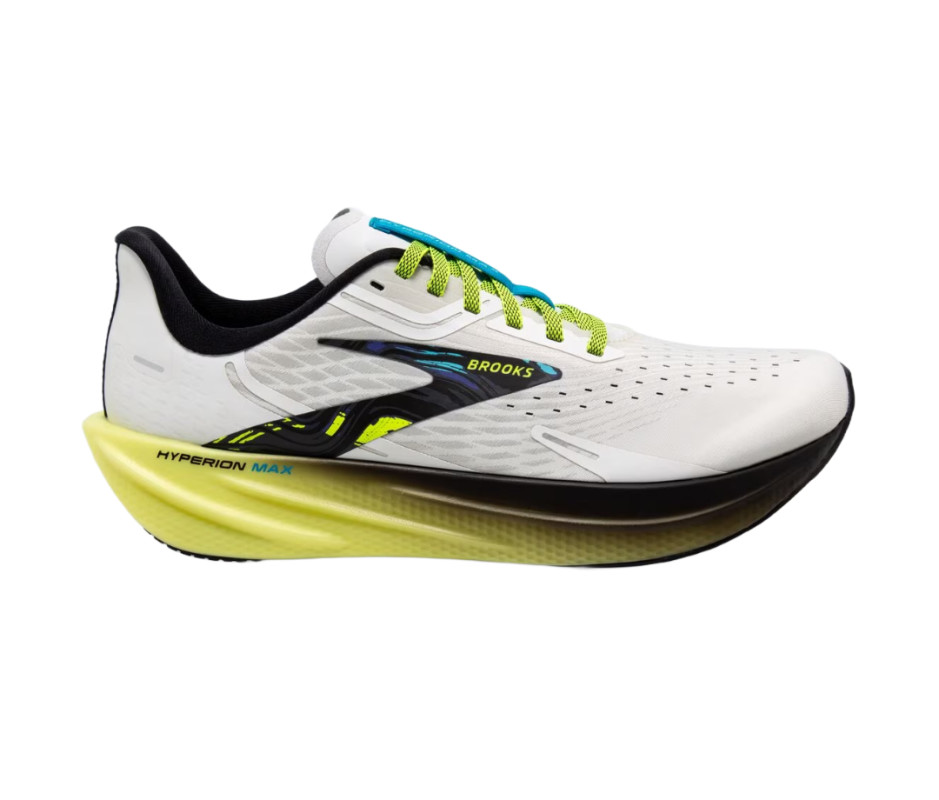 Brooks Hyperion Max
Brooks Hyperion Max
Courtesy Image
Early this winter I donned the Hyperion Max in an attempt to keep up with my sister during one of her college track workouts. Needless to say, I did not keep up. But, as she bolted past me on her way to finish nearly twice as many miles as me, I was able to catch a burst of energy and sprint out my final mile with her, holding around 6:00 mile pace late in my run.
That may not sound like much, but the Brooks Hyperion Max felt so bouncy and comfortable late in my workout that I felt empowered to turn on my comparably slow version of “the jets.” Since then, I’ve done both slow long runs and short speedy runs and admired the versatility of this trainer. The Hyperion lineup is certainly geared toward more competitive runners, but of the three (Hyperion, Max, and Elite), the Max feels like it has the widest appeal for most runners.
My only complaint is that there is no carbon plate in this shoe. It feels like a natural choice. A comparable New Balance shoe, the SC Trainer 2, has one. When running in Hyperion Max, I missed the additional pep the New Balance’s plate provided. Sackett says that Brooks is adding a pebax plate, which is less expensive and more rigid than carbon, to the next version of the Hyperion Max, which releases later this year.
That said, for a double-duty marathon training and racing race, the Hyperion Max and Hyperion Elite 4 make an excellent team, with very similar fit and feel.
Pros:
- Exceedingly comfortable, no matter the distance.
- Super lightweight for a max-cushion trainer.
- Versatile enough to do speed workouts and long runs.
- Plenty fast enough to race in.
Cons:
- No midsole shank or plate.
- Stack height and narrow sole make it somewhat tippy or unstable when turning corners.
WEIGHT: 7.8 ounces
HEEL-TOE DROP: 8 mm
